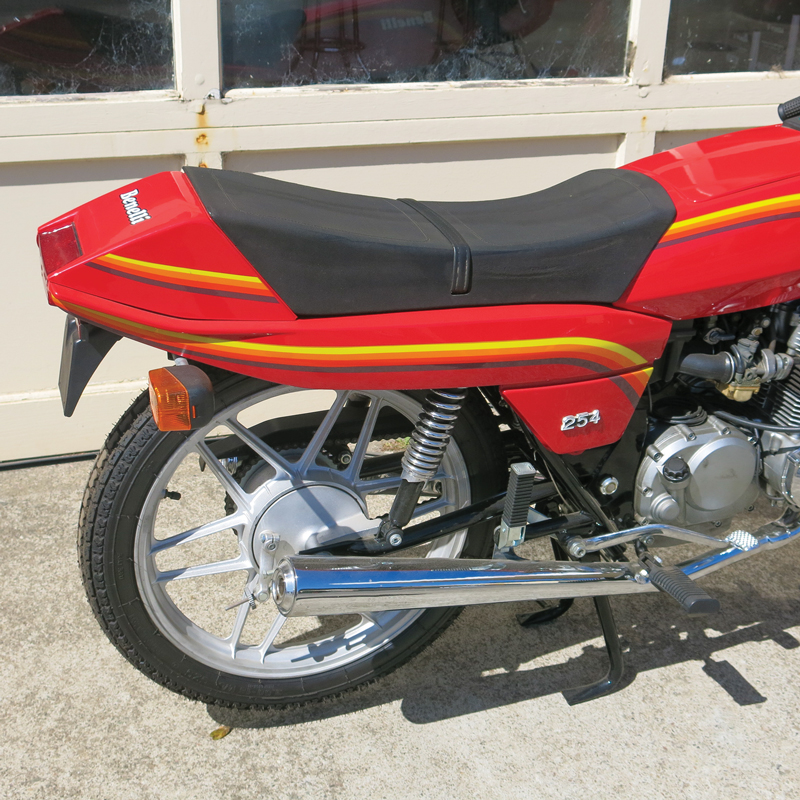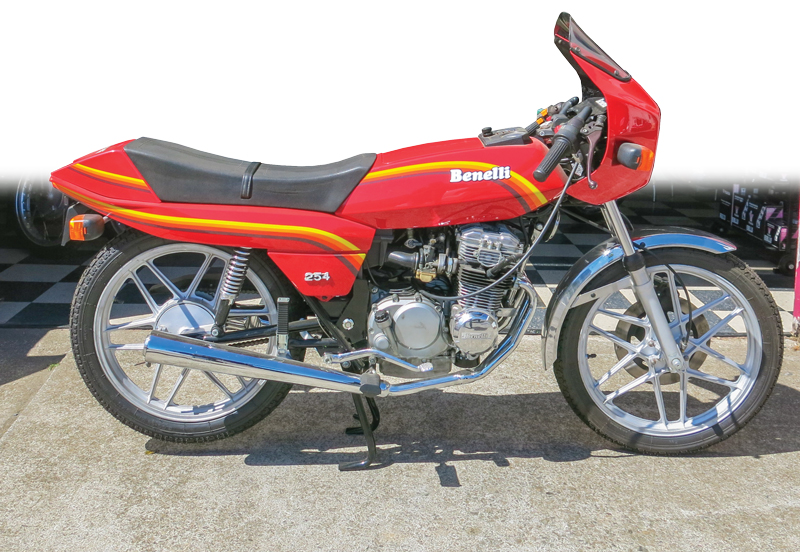
Here was a delicious little machine, a transversely mounted 231cc in-line four, putting out some impressive horsepower and weighing, fully fueled, a modest 269 pounds. With a top speed of more than 90 mph. However, in 1980 Benelli dealers also had 500 and 650 fours, along with an impressive six-cylinder 750, on the showroom floor…and Americans interested in Italian motorcycles did not care for these tiddlers. Anyone wanting a 250 could get one much cheaper from a Japanese dealer.
Cosmopolitan Motors was importing Benellis, and in 1980 the factory apparently told Cosmo that in order to get a few 750s they would have to take some 250s as well; Cosmo did so. Actually, when this 250 was conceived it was aimed strictly at the European market, as Italy and some other countries gave sub-250 bikes a good tax break and insurance costs were lower. The American market had never been seriously considered, but when 250 sales in Italy and elsewhere were not doing well, the company decided to foist a few off on the Yanks.
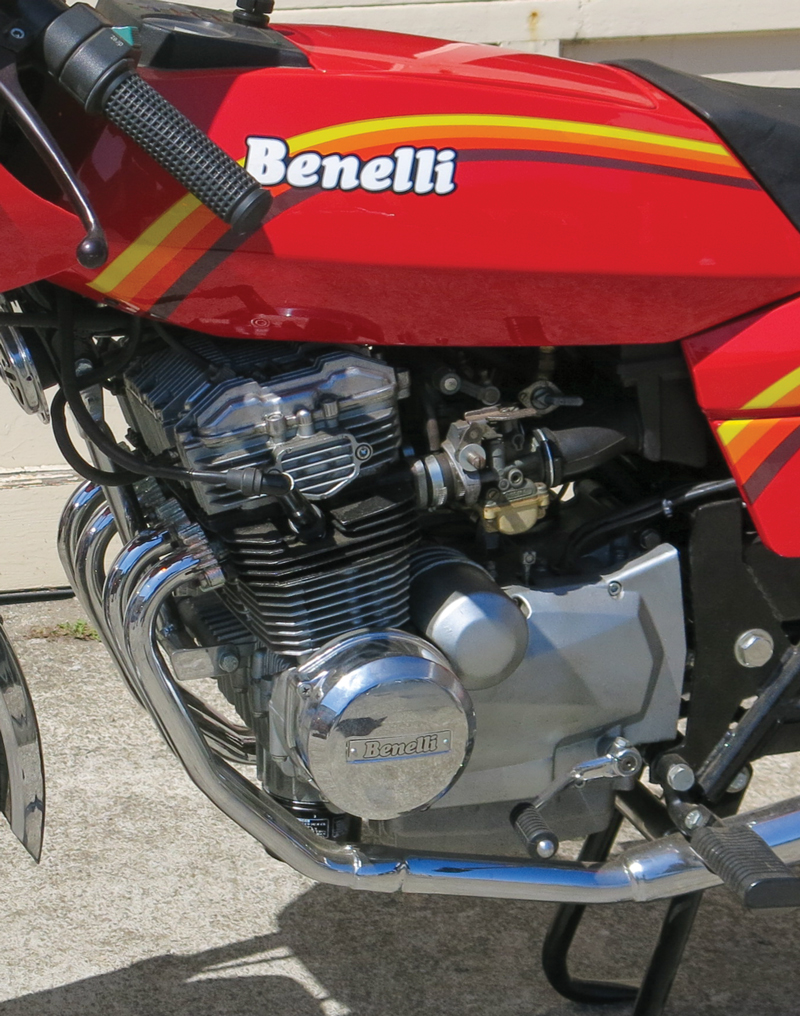 A little Benelli history: In 1911 the six Benelli brothers set up a garage in Pesaro, Italy, and specialized in fixing motorcycles—and soon started fabricating their own spare parts. In 1921 they built their first motorcycle, the 98cc Velo, and like any good Italian manufacturer took a big interest in racing. In 1937 they hired a young engineer named Lino Tonti in the racing department, and two years later he presented his 250 DOHC, in-line-four racebike, which was liquid-cooled and supercharged, ready for the 1940 season. Unfortunately Mussolini signed up with Hitler in June of 1940, and the rest is history.
A little Benelli history: In 1911 the six Benelli brothers set up a garage in Pesaro, Italy, and specialized in fixing motorcycles—and soon started fabricating their own spare parts. In 1921 they built their first motorcycle, the 98cc Velo, and like any good Italian manufacturer took a big interest in racing. In 1937 they hired a young engineer named Lino Tonti in the racing department, and two years later he presented his 250 DOHC, in-line-four racebike, which was liquid-cooled and supercharged, ready for the 1940 season. Unfortunately Mussolini signed up with Hitler in June of 1940, and the rest is history.
War ended, Allied bombing had flattened the Benelli factory, but the boys—now older gents—got to work and had a pair of 250 and 500 single-cylinder street bikes for sale by 1947. When the GP races began again in 1949, they had a DOHC 250 single ready for the fray. In 1960 a new DOHC 250 four was at the track, winning a World Championship in 1969.
But the company was in financial trouble, due partially to racing expenses and the unexciting two-strokes they were selling to the public. Then a wealthy Argentinian businessman of Italian origin, Alejandro de Tomaso, showed up, acquiring 85 percent of the company in 1971 and then buying Moto Guzzi in 1973. Coincidentally, Lino Tonti was working for Guzzi at the time, and de Tomaso said he wanted some multi-cylinder bikes for the market. In 1974 the Benelli 500 and 650 fours appeared, which were closely patterned after some Japanese fours. But the next four-banger, the 250, was said to be very Italian, as nobody had made a road-going four that small. But it cost 30 percent more than Benelli’s 250 two-stroke twin.
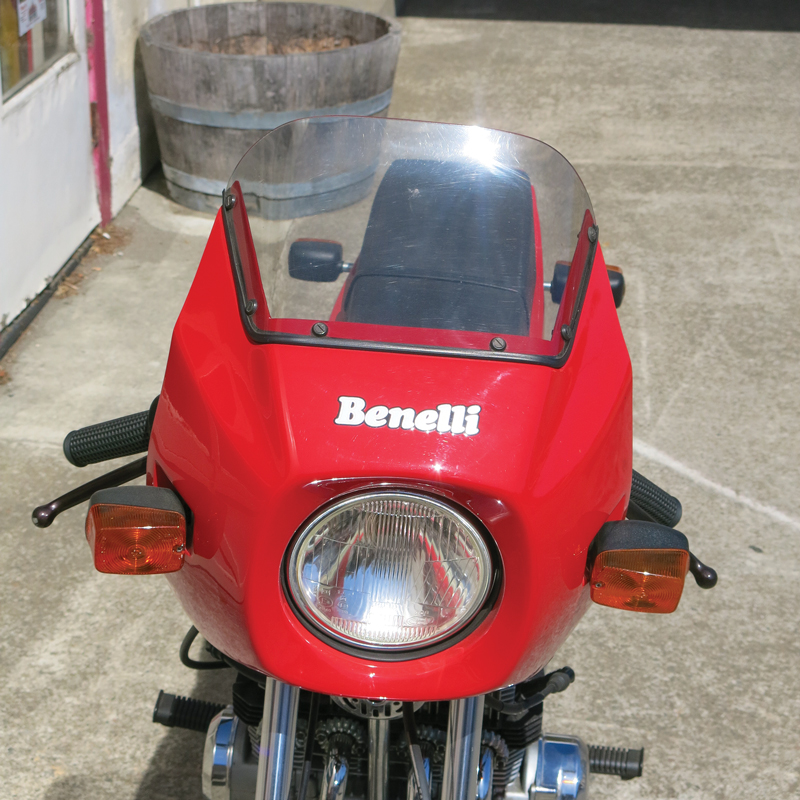 The 231cc wet-sump engine was of the oversquare, short-stroke design, with a 44mm bore, 38mm stroke and a compression ratio of 10.5:1, happily revving to 10,500. All this was done using one overhead camshaft, two valves per cylinder and four 18mm Dell’Orto carburetors; 27 horsepower at the crankshaft. Ignition was done via battery and distributor, with the battery also powering the electric starter. Hardly necessary on such a small engine, but deemed essential in the modern market.
The 231cc wet-sump engine was of the oversquare, short-stroke design, with a 44mm bore, 38mm stroke and a compression ratio of 10.5:1, happily revving to 10,500. All this was done using one overhead camshaft, two valves per cylinder and four 18mm Dell’Orto carburetors; 27 horsepower at the crankshaft. Ignition was done via battery and distributor, with the battery also powering the electric starter. Hardly necessary on such a small engine, but deemed essential in the modern market.
Primary drive was by a combination of chain and gears, a wet clutch putting power through a five-speed gearbox, with another chain going out to the rear wheel.
The open tubular frame was light, using the engine as a stressed member, and sportily rigid. A single downtube was bolted to the engine between the second and third cylinders. The front fork was a Benelli design, with the damping oil inside the cartridge, the oil in the fork legs for lubrication only. A pair of shock absorbers suspended the rear. The alloy wheels, both 18-inchers, had six twin-spokes, a 260mm disc brake on the front, drum at the back. Wheelbase was a modest 50 inches.
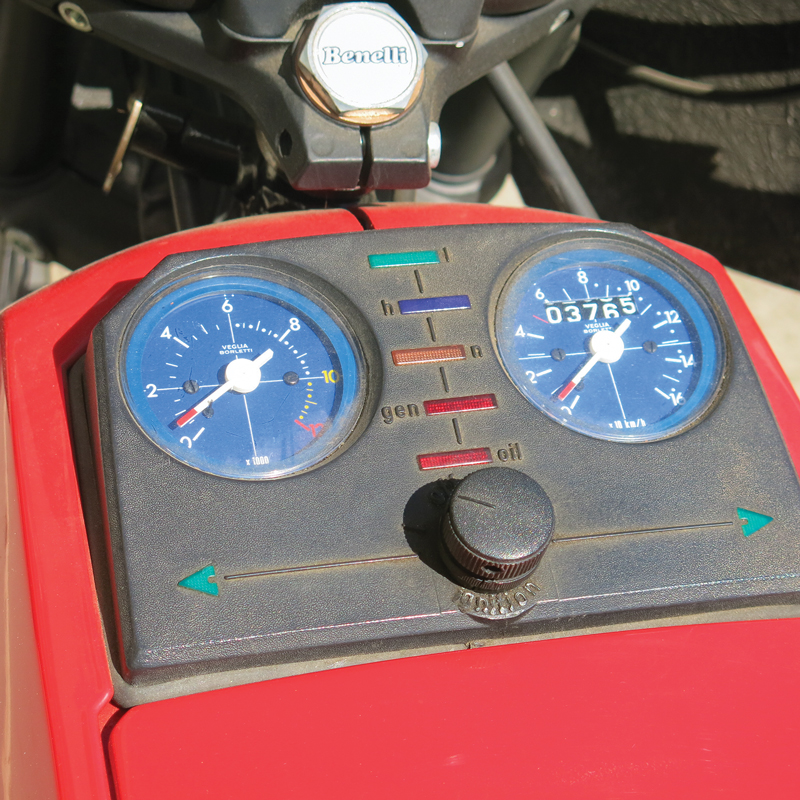 In 1977 similar models were sold by both Benelli and Moto Guzzi. With styling focusing on the sport rider, the Benelli was labeled the 250 Quattro; the Moto Guzzi 254 was aimed at the touring rider..
In 1977 similar models were sold by both Benelli and Moto Guzzi. With styling focusing on the sport rider, the Benelli was labeled the 250 Quattro; the Moto Guzzi 254 was aimed at the touring rider..
The styling fellow who did the Benelli bodywork had been charged with making the bike look modern, as well as appearing sleek. The end result was not very aesthetic; light thermoplastic panels, using straight rather then curved lines, covered the small gas tank and then angled down to where separate side panels would normally be. Moto Guzzi, on the other hand, had more traditional styling, with small panels making the gas tank look normal. Long panels traveled under the seat to a curved tail section, creating an attractively sporty look.
 In an attempt to declutter the handlebar area on both bikes the speedo, tach and warning lights were positioned flat on top of the gas tank, requiring the rider to take his eyes off the road to see how fast he was going—not a good idea. Much better to have the instruments up by the headlight. For further decluttering, the reservoir for the front brake fluid was also tucked under the top of the tank.
In an attempt to declutter the handlebar area on both bikes the speedo, tach and warning lights were positioned flat on top of the gas tank, requiring the rider to take his eyes off the road to see how fast he was going—not a good idea. Much better to have the instruments up by the headlight. For further decluttering, the reservoir for the front brake fluid was also tucked under the top of the tank.
Time went on, neither 250 selling well, and in 1980 the Mark II version came along. The Guzzi-labeled 250 was dropped, with the new Benelli 254 retaining the better-selling Guzzi styling and adding a little quarter fairing. The only picture we could find of the little Benelli sold in the U.S. was in the “1982 Motorcycle Buyer’s Guide” and it showed that slab-sided 250 Quattro model (the bike pictured in this article was imported to the U.S. from Europe). Cosmo dropped the model after 1982, while the factory went on producing the 254 version in Europe for another two years.

